9 Things to Know About Snow Sports
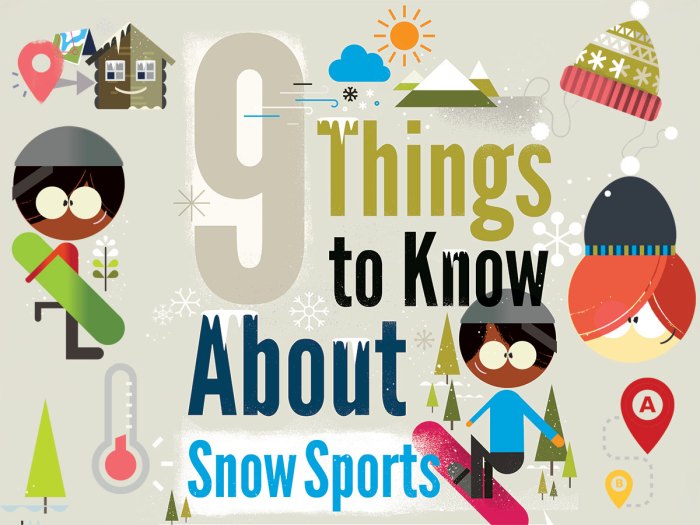
Ready to try out some snow sports? Before you hit the slopes, check out these nine tips for maximizing your winter fun.
#1. PICK YOUR SNOW SPORT
You can find a ton of fun on ice or snow. There’s ice skating, hockey, ice fishing, snowshoeing, cross-country skiing and sledding, just to name a few winter activities. Two of the most popular are downhill skiing and snowboarding.
If you’ve never done either before, they’re great sports to try with your unit. Carving through the powder presents plenty of challenges and rewards as you progress.
“I had never gone skiing,” says Caroline Fitzgerald, 14, a Star Scout with Troop 340 of Las Vegas, Nevada. “I thought it was a good opportunity to go with my friends. Some of the girls had skied before, so I could ask for help if I needed it.”
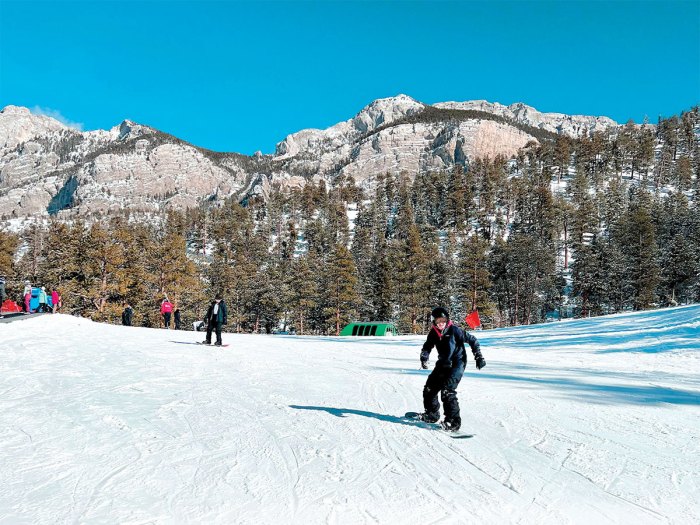
#2. PLAN YOUR ADVENTURE
Many ski resorts offer developed trails with varying difficulties. These trails are labeled green circle (easy), blue square (intermediate), black diamond (advanced) and double black diamond (very advanced).
You can find resorts across the country, with most throughout the Rocky Mountains and Appalachians. You might be able to find a place close to home. Troop 340 went on a day trip to Lee Canyon Ski Resort, less than an hour’s drive from Las Vegas.
Skiing and snowboarding can get costly, with day passes ranging from about $20 each to a couple hundred, depending on where and when you go. Search for discounted days. Some resorts provide such days specifically for Scouts and their families, like Shawnee Mountain Ski Area in Pennsylvania. Shawnee’s Scout weekend offers discounts up to 40% off lift tickets and rental equipment. Troop 883 of Eldersburg, Maryland, and Troop 146 of Hoboken, New Jersey, both took advantage of the slashed rates at a recent Scout weekend.
“It wasn’t too crowded, but I did see other troops there,” says Otys Train, 14, a First Class Scout with Troop 146. “Everyone in our troop told our Scoutmaster what they wanted to do; he was able to schedule the rentals.”
Another cost-saving tip: Camp at a nearby council camp, or book a cabin instead of staying at the resort.
Before you go, review the Guide to Safe Scouting to ensure everyone is physically ready and knows the safety rules. You should also have qualified adult leadership.
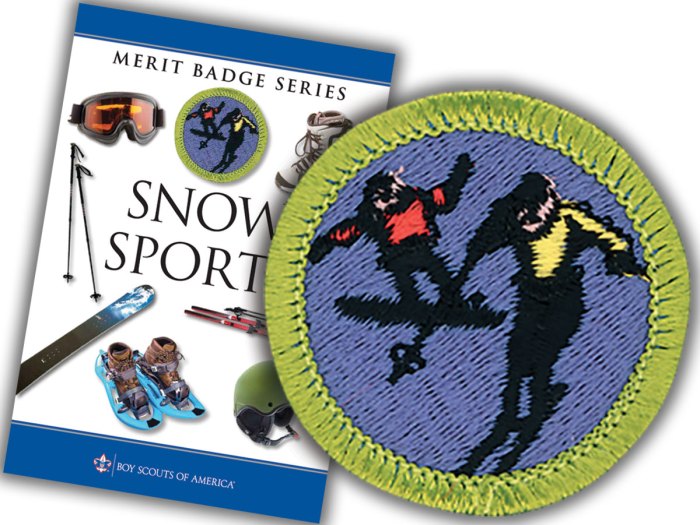
#3. READ THE SNOW SPORTS PAMPHLET
The Snow Sports merit badge pamphlet is full of valuable information, from safety rules to tips for technique. Read about how to properly get on and off a ski lift, practice etiquette on the mountain and perform first aid.
Dean Mimura, a Snow Sports merit badge counselor, recommends Scouts review the pamphlet before hitting the slopes. He has volunteered for the last few years at an annual Scout event at Big Bear Mountain Resort in California and estimates that usually half of the Scouts who sign up for the merit badge complete it at the event. The more prepared Scouts are, the more successful they tend to be, even if they aren’t trying to earn the merit badge.
“It’s a fun merit badge, and it’s designed to make a Scout a more well-rounded person,” Mimura says. “With any sport, there’s always conditioning, cardio and staying fit. It’s part of the Scout motto.”
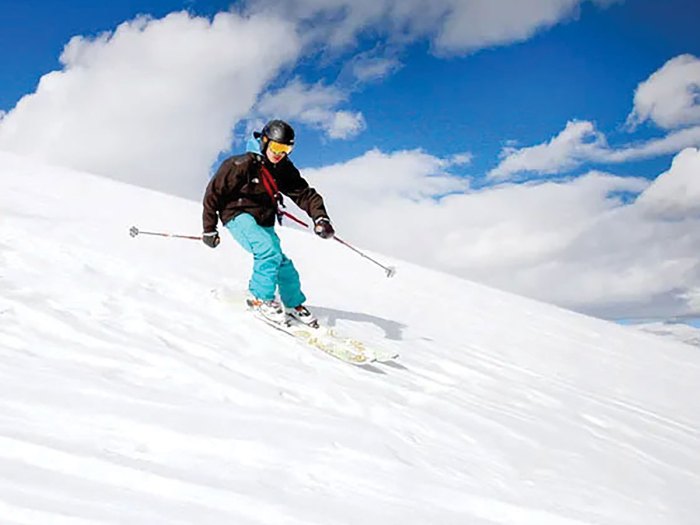
#4. GEAR UP
Prepare for cold weather with the proper clothing. That means leaving your cotton shirts and denim jeans at home — these materials won’t keep you warm when they get wet. Instead, you’ll want wool, fleece and synthetic materials. Dress in layers so you can adjust your temperature. Put on waterproof gloves and thermal socks.
Some extra gear Scouts find helpful are hand warmers, a snow mask, a bottle of water and a waterproof bag to hold your stuff.
Always wear a ski helmet and goggles. You can usually rent a helmet, skis, snowboards, poles and boots from the resort.
“I rented a helmet, skis and boots,” Caroline says. “We figured out what sizes we needed and put it on properly. You were able to try it on right there and switch it if it wasn’t feeling right. They made it very easy.”
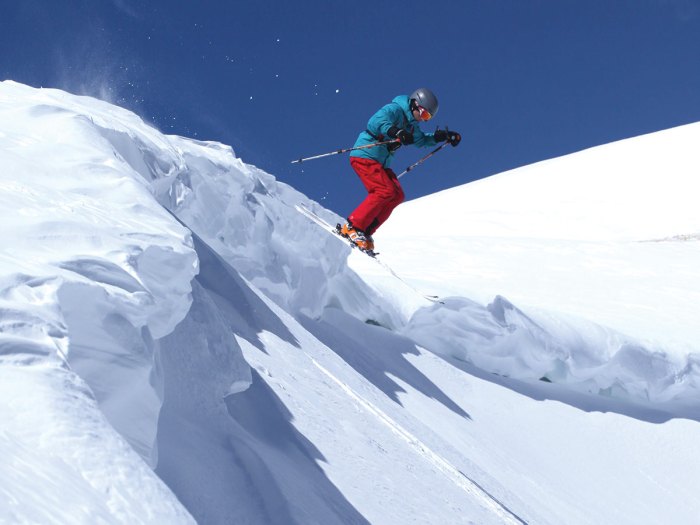
#5. KNOW YOUR LIMITS
If you’ve never gone skiing or snowboarding, don’t expect to tackle a double black diamond slope by the end of the weekend. Even if you’ve been before, you might want to start on the beginner slopes.
“I’ve been skiing, but that was a long time ago,” says Reyansh Sahani, 12, a Scout with Troop 146. “I fell lots of times for the first few hours. After lunch, I went again, and I didn’t really fall — that was good. You need to have patience.”
The more you get used to maintaining your balance and speed, the more you’ll be ready to advance. One trick for accomplishing this on skis is using the wedge position or “pizza,” in which you make a “V” shape, pointing the tips of your skis toward each other.
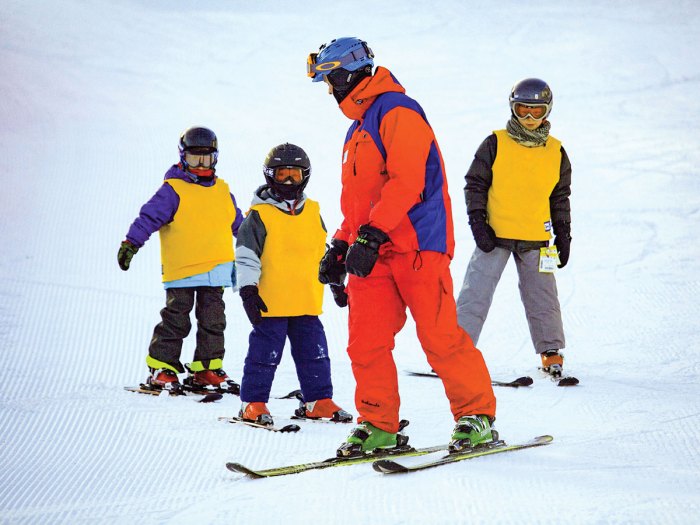
#6. TAKE SNOW SPORTS LESSONS
Resort instructors can teach you the basics of skiing and snowboarding. It’s always a good idea to take advantage of their expertise.
“If it’s your first time, second, third or fourth time, always take lessons and get a refresher,” says Ben Reed, 17, a Star Scout with Troop 883. “I wanted to try skiing. They showed how it was very different from snowboarding.”
Most beginners find skiing less challenging than snowboarding, unless they’re great surfers or skateboarders — then the skills translate well to snowboarding. Skiing also allows for more maneuverability since your feet aren’t locked onto a single board.
“Everything has to do with weight distribution and balance,” Mimura says. “If you learn skiing first, snowboarding will come a lot easier.”
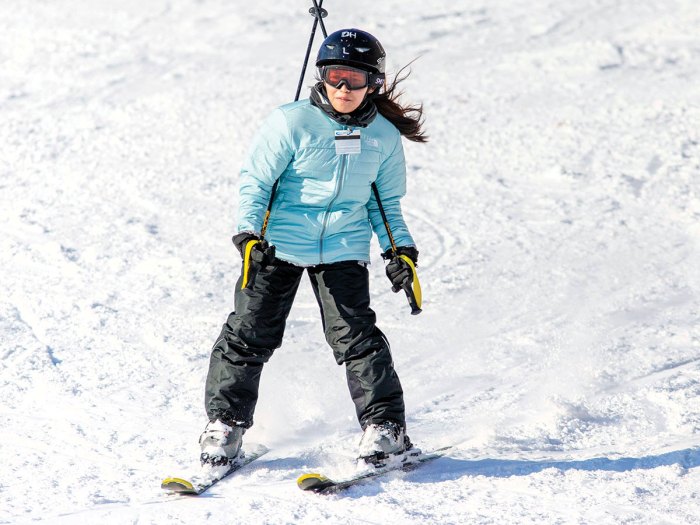
#7. PACE YOURSELF
Don’t worry about trying to keep up with your friends or completing a merit badge right away. If you don’t feel comfortable advancing, you can say no. Work on your skills until you feel ready for more challenging slopes.
“I started off on the bunny hill, and we went down that a few times,” says Nicola Mark, 13, a Second Class Scout with Troop 340. “Then we went up to the next level, which was green, and it was a little steeper.”
#8. FALL. AND GET BACK UP AGAIN
You’re most likely going to fall. That’s OK. That’s how you get better. You can study why you fell and then work on your technique.
“When I was falling, the edge of my snowboard would dig into the snow when I’d turn,” says Andrew Demont, 15, a Star Scout with Troop 883. “I’d crash. Then I’d try going more lightly on the turns, and that helped.”
Ski with a buddy and cheer each other on.
“We fell a lot, but we encouraged each other to get back up,” says Eagle Scout Max Magulick, 17, with Troop 883. “People would pass us, but we’d try to stick to our own pace.”
Stay on designated slopes to reduce the risk of running into trees, rocks and other obstacles.
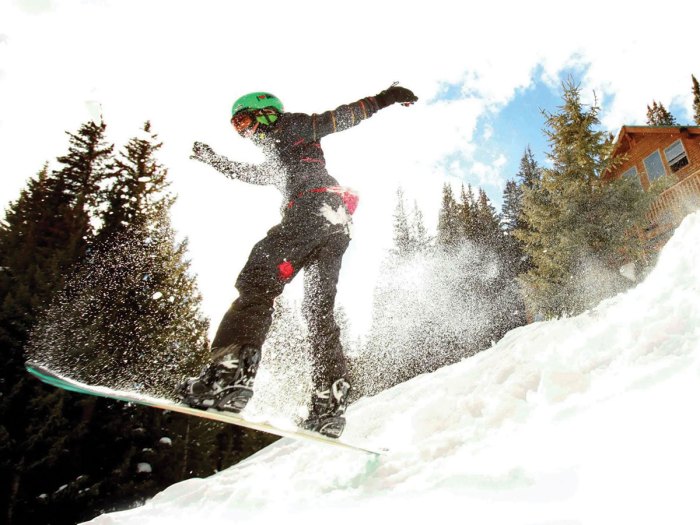
#9. HAVE FUN!
Snow sports can be difficult at first, but with more practice, you’ll soon get used to the slopes and might find a new favorite winter hobby.
“I love the combination of being able to ski and hang out with my friends,” Otys says.
Leave a Comment